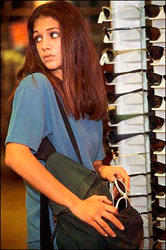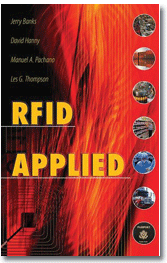The Advent of Tags in Consumer Goods
The goal of most RFID systems is to increase the granularity of effective inventory counts to know what items are where, and when. By grouping products and attaching a tag to a case or pallet, a number of items can be tracked simultaneously as they travel together. With all but the most advanced of today’s retail systems, inventory visibility ends here. It should come as no surprise, however, that technology trials are underway to track individual items throughout the retail environment and at the point of sale. This is where true granularity can be achieved and tremendous opportunities to increase revenues can occur.
Tracking Individual Items
BBSpot, a satire website, heralded the benefits of Wal-Mart’s upgraded supply chain with a story titled, “RFID Tag Technology Confirms One-Fruitcake Theory.” Their story confirmed what we have all suspected – a single fruitcake has been ‘re-gifted’ year after year. Humor aside, the ability to precisely track individual items is extremely valuable. Many consumer goods companies suffer from frequent out-of-stock conditions. Larry Kellam, director of business-to-business supply network innovation at Procter & Gamble estimates 10-16% of its products are out of stock at any moment. Even a slight reduction in this figure would translate to millions of dollars in sales for a company with $40 billion in annual revenue. The only guarantee of fully stocked shelves is time consuming and inaccurate manual inventory processes. By tagging individual items and embedding readers in displays, however, retailers and suppliers could verify the inventory’s precise whereabouts.
But a lack of inventory is not the only problem. Items are often placed in the wrong location by consumers who examine items then put them back down. A subsequent buyer looking for that product may not find it. This “mismatch” condition wreaks havoc on contemporary supply algorithms that are only able to predict demand for a product based on the number of items purchased.
RFID at the Point of Purchase
A read is a verification of a unique tag’s location within proximity of a reader. To confirm all items are in their proper location, a retail display must be fitted with a number of readers, each representing some physical fraction of that display. A reader might be associated with a particular shelf, even an individual lane on that shelf. To ensure that an item will be read by only a single reader, its tag’s read distance must be less than half the distance between two readers. If the read distance of an item’s tag is greater than this distance, it would appear that the item exists on two shelves at once. While RF shielding and a variety of software techniques can be used to circumvent this apparent shortcoming, the frailties of high-granularity retail RFID systems restrict its use outside specialized retail environments. Necessarily bounded read distances mean that an item must be inches from a reader for a read to occur, reducing the likelihood of an unauthorized transaction. This inherent characteristic makes privacy concerns regarding fast moving consumer goods embedded with RFID tags seem largely unfounded at this time.
Protecting Luxury Items
RFID presents other opportunities for items with large profit margins. A high value product generally benefits from expanded, flexible retail space. A luxury item’s velocity may not be sufficient to demand that manufacturers receive real-time inventory counts, but such items will often require sophisticated electronic article surveillance (EAS) systems to deter theft. By combining aspects of RFID systems with EAS, a long range reader can monitor the presence of an individual item within a perimeter. If that item moves out of an expected safe distance for an unusual period of time, security cameras can be triggered and personnel can be alerted.
Theft Detection
Advanced EAS systems are not the only method of reducing shrinkage. Professional thieves often scoop dozens of a product from retail shelves in a swift, singular motion. These high volume shoplifters can steal hundreds or thousands of dollars of merchandise in a manner traditional security teams find difficult to prevent. Real time, item-level inventory systems can detect such perturbations within moments of their occurrence.
The Dangers of Item-Level Tagging
The drawback to embedding RFID tags in consumer items is the possibility of unauthorized reads. Consumer groups, specifically Consumers Against Supermarket Privacy Invasion and Numbering (CASPIAN), advocate strict regulation of RFID usage at the item level. A position statement issued by CASPIAN, the ACLU, the Electronic Frontier Foundation (EFF) and others calls for a moratorium on item-level tagging until formal technology assessment takes place. The statement names “the creation of a global item registration system in which every physical object is identified and linked to its purchaser or owner at the point of sale or transfer” as a definitive threat to privacy and civil liberties. The statement continues: “If personal identity were linked with unique RFID tag numbers, individuals could be profiled and tracked without their knowledge or consent.”
While the creation of such a system would be extraordinarily difficult, there is no technical reason that it could not exist. But consumers have little to fear in the short term: Forrester Research predicted in January of 2004 that it will be more than two decades before widespread item level tagging is in use. Similarly, Metro Group CEO Hans-Joachim Körber expects it will be ten to fifteen years before the technology gains universal acceptance. Yet the benefits of item-level tagging and plummeting fabrication costs ensure its eventual utilization. The key to its successful inception is a reasonable balance between the technology’s capabilities and the consumer’s desire for privacy.



